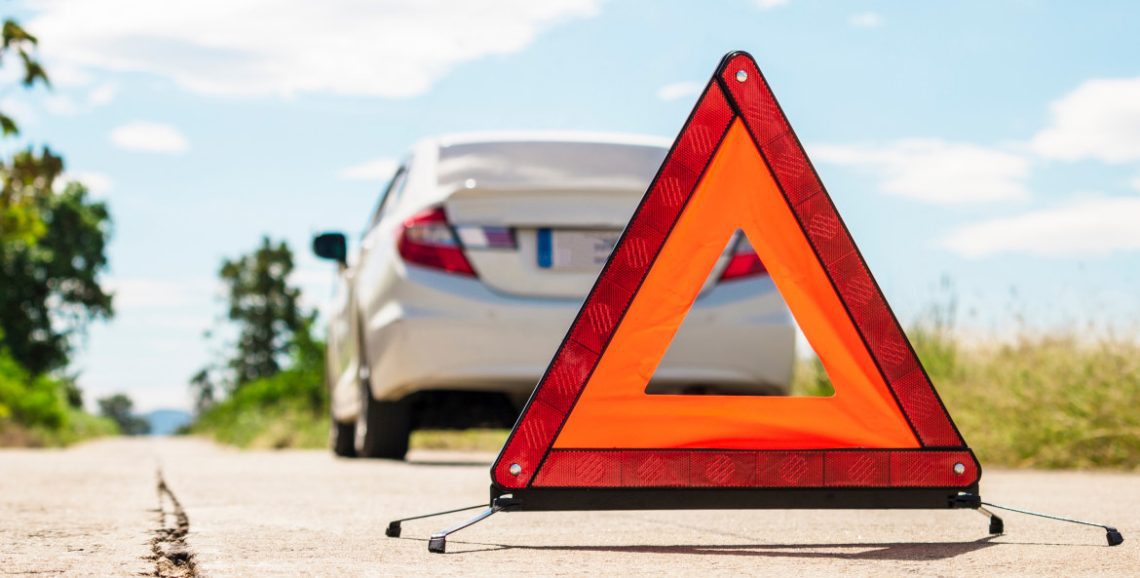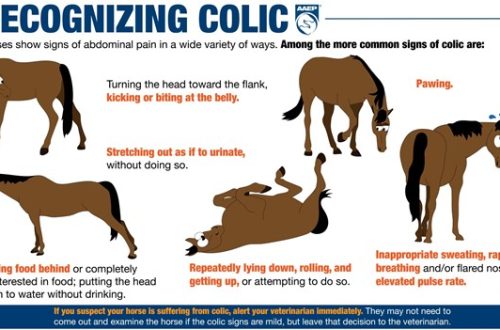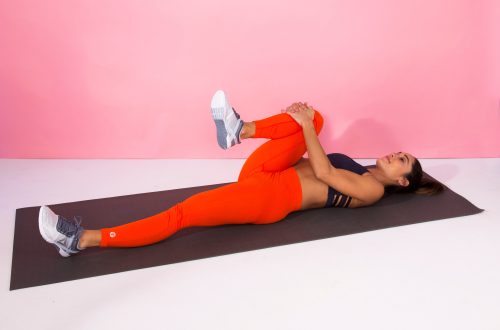
Emergencies on the road – how to anticipate the unexpected?
Emergencies on the road – how to anticipate the unexpected?
Despite the fact that no one wants to get into emergency situations, they happen. The key to a successful outcome, according to emergency management experts, is to plan ahead in case of an accident.
We take control of the situation
“The main thing in an emergency, if you are able to act, is to be active, not reactive,” advises Dr. Jim Hamilton of Southern Pines Equine Associates (North Carolina), an expert in training animal behavior during disasters. – The best athletes often use the psychological technique of “visualization” to help them mentally plan and execute a winning strategy. They close their eyes, break down their task into the smallest possible steps, and then mentally go through each one. When their time comes, they enter the battlefield with confidence, because in a sense they have already completed their task. They can focus and focus, and since most of the possible scenarios have already been thought out, surprises are unlikely.”
“When people panic, they forget a lot, including what they learned,” says Dr. Hamilton. “Just accept this fact and take steps to help you think clearly in an emergency. Even in situations where no one is physically harmed, the ability to think quickly and inventively is hampered by a general state of anxiety. The best planning you can do is to think ahead of time about all the possible things that could happen to your horse on the road, the different behaviors in an emergency, and the tools and supplies you’ll need. Finally, imagine that you are actually taking the necessary steps to solve the problem, play it out in your head.”
Planning
One of your most important helpers is a well-stocked first aid kit. Ask your veterinarian for advice on what exactly should be in it. Let him recommend medications and tell you about their use. Pay special attention to those of them, the action of which is aimed at relieving pain and calming!
Be honest with yourself about your own horse first aid abilities. If one person can confidently and competently inject a horse, another person may not be up to the task even in normal stable conditions, outside of an emergency. Think about whether you can manage to give the horse medicine orally?
Among the medical problems that can be encountered on the road and which can be predicted are colic, hypothermia, overheating, dehydration, superficial injuries, deep wounds and broken limbs.
If you have never taken a first aid course, do so. Many first aid methods, such as applying pressure to a wound to stop bleeding or using ice packs for sprains, are the same for both humans and horses. Check with your veterinarian on how to adapt standard first aid practices to the equine anatomy if you are unsure how to do this.
One of the most common problems that Dr. Hamilton notes is transporting horses without a sufficient supply of water. Carriers may object that they travel too short distances, that they know where to find a source of water on the road (for example, at a gas station), etc. However, this approach is an example of poor contingency planning.
Imagine that you have a mechanical breakdown on a busy highway somewhere in the middle of the fields. The day is very hot, and there is no water with you. The help you called for should have arrived in an hour, but actually arrives in three … After assessing the situation, the auto mechanic says that he needs to return to the MOT station. And a few more hours go by. What is the result? Horses are overheated, thirsty and possibly dehydrated. You need fresh water, not only to give them a drink, but also to cool them…
“If you’re taking two horses,” advises Hamilton, “plan to carry about 20 liters of water per horse for drinking, plus another 20 to 40 liters to cool them down if the weather is very hot. It is advisable to have about 20 liters with you in case of washing large wounds. In total, you will need 80-100 liters of water. If you plan to be on the road for more than three or four hours, this amount should be increased. Water can be taken in various containers available to you. There are also special tanks that are installed right in front of the horse trailers. Regardless of how you transport this water, you must have enough water to meet the horses’ needs during an emergency.
Another example of pre-planning is finding and preparing suitable materials for splinting in case the horse breaks a limb. Dr. Hamilton recommends using a PVC tube as a splint to stabilize and support the foot. If you don’t want to carry a PVC tire with you, think about what items you have on hand in your trailer that might work as a makeshift tire.
Many horse owners use fleece sleeves to secure the splint, but if you want to be well prepared for the road, still have 1-2 sets of elastic bandages with you for bandaging and fixing splints or use as dressings. Extra towels should always be on hand – they can be used to clean wounds or to stop bleeding.
Step by step
Since it’s hard to keep a clear head in emergency situations, Dr. Hamilton advises horse owners to keep a pre-made checklist in the glove compartment of their car. During an emergency, you can get it and just follow the points. Here are the steps that Dr. Hamilton recommends taking in turn:
1. Keep calm. Assess your physical condition and the condition of all passengers before checking horses. Emergency personnel often say that the hardest job at the scene of an accident is to calm the hysterical owner. Try to relax, focus and think as clearly as possible.
2. Determine if you need outside help and how to get it. Do you need to call XNUMX for medical emergencies or call the police? And to a service station or a service that provides towing services?
Having a list of phone numbers in your car can help you stay calm and act decisively.
Мобильный телефон (fully charged and roamable if you are traveling abroad) can be critical if you need urgent medical attention. It can also be very useful walkie-talkie, tuned to the frequency at which truckers communicate (27.135 MHz, 15th channel, – approx. ed.).
3. Assess the condition of the horses and their needs. Are horses injured? Do they need urgent medical attention? Is any horse bleeding? Is the horse breathing fast and shallow, is its pulse weak, is capillary refill slow? Gather as much specific information as possible to pass it on to the nearest veterinarian. (To learn how to self-assess the condition of the horse, you can find here. – Approx.ed.).
The biggest challenge for a veterinarian when a call comes in about this kind of accident is understanding what is really going on with the horse and what it needs medically. The more clearly the owner or carrier can describe the picture, the more accurate the veterinarian’s advice over the phone can be.
If the emergency is characterized only by the presence of technical damage (car, trailer), then the horses may need food and water (possibly heating or cooling).
4. Unload the horses, only if you are in a quiet, absolutely safe area and you have enough helpers! Never unload your horses while you’re standing on the freeway – it’s a recipe for disaster. If possible, drive away from the highway and find a quiet place to unload. Otherwise, keep the horses in the horse carrier until a vehicle arrives to evacuate you from the scene or other help arrives.
5. Determine what can you and what you can’t do before help arrives. In an emergency, your ability to influence the situation may be severely limited. For example, you may not be able to do more than calm a horse with a heavily bleeding wound after applying a pressure bandage until the veterinarian arrives.
If the horse shows signs of colic, try to water it until the veterinarian arrives and assesses the situation. Find out what you can do and do it while you wait for the vet or other emergency personnel. Avoid overreacting on your part, otherwise you may make things worse by trying to do more than you can realistically do.
Another critical contingency to plan ahead is what will happen if you fail to act at all. If you passed out or were driven away from the scene because you were injured, who will make the decisions in your absence? Dr. Hamilton recommends posting in a conspicuous place (in the horse carrier and/or in the car) the information needed by the police and rescue workers. In addition to the names of the horses and your name, address and phone numbers, include the phone numbers of the horse owners, the stables where the horses are kept, their veterinarian and other responsible persons. It is better to laminate this sheet. If you are absent, the police and other authorities should be able to easily determine the circle of people who can make decisions for you.
Working with emergency personnel, Dr. Hamilton found that most workers have a fear of horses that they hide when they work around a consultant. “The vast majority of emergency workers have no idea how to approach a horse, how to put on a halter, or what a lead is,” he says. “Most people have confidence that horses can strike. Their fear factor plays a big role.”
The analysis of extreme incidents also shows that the lack of experience with horses among emergency workers worsens the overall picture. For example, many rescuers arriving at the scene of traffic accidents do not know how to safely enter the trailer to the horse, through which doors the horses are unloaded, how the panic locks that many horse carriers are equipped with work.
One solution to this problem could be for local equestrian clubs to work with rescue personnel to ensure they are familiar with horses and equestrian equipment. In the context of this training, trainings are also held to take horses out of the horse carrier. Veterinarians can explain to rescuers how to deal with a nervous and panicked horse. Rescuers must be shown how to catch a runaway horse.
Prevention can help to avoid many accidents associated with horse carriers. Before you go on a short trip, make sure your trailer and the vehicle towing it are in good condition. Annual inspections should include a thorough inspection of tires, brakes, trailer chassis and floor, and all equipment. Make sure the trailer hitch is in good working order and that you know how to use all of its safety features.
(a source)
We decided to supplement this material with an extended list of Dr. Hamilton’s recommendations outlined by him in another article (source). – Approx. ed.
An emergency kit to have when transporting a horse in a horse carrier:
- Spare wheel in good condition, matching the rest of the trailer wheels.
- Adjustable wrench that fits lug nuts on both vehicle and trailer.
- Anti-recoil shoe.
- Jack.
- Trailer socket.
- Insulating tape
- Dismantling tape.
- Flashlight with spare batteries (ideally with a cigarette lighter charger).
- Emergency triangle.
- Sharp knife.
- Water.
- Bucket and sponge.
- Save halter and chombur, cord.
- Additional fuses and bulbs for portable lighting and trailer lighting.
- Fire extinguisher designed for chemical fires and tire burning.
- WD-40 or other spray.
- Broom (broom), shovel, garbage bags.
- Connecting cables.
- Toolbox.
- Spare belts and hoses.
- Tow rope or chain.
- Mobile phone (radio).
- Work gloves.
- Portable air compressor.
- Documents: proof of insurance, vehicle and trailer registration documents, etc.
- Auto-help phone numbers.
- List of stables located in various regions of the country.
- First aid kit.
On winter trips will also be useful:
- Sand.
- Red flag to be attached to the antenna
- Blankets.
- Blankets for people.
- Candles.
- Matches or lighters.
- Tire chains.
- Food and water.
Translation by Valeria Smirnova.




